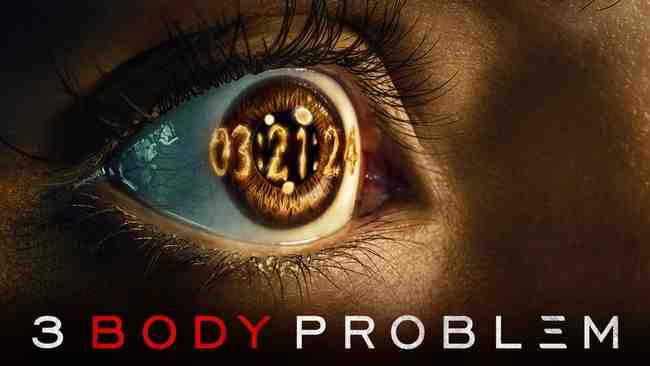Netflix’s recent docu-drama “What Jennifer Did” has come under scrutiny, accused of potentially exploiting AI-generated images in a bid to add sizzle to the true crime narrative. Recalling a recent Futurism report, we must question whether these forms of altered aesthetics, with uncanny anomalies like distorted hands and peculiar facial discrepancies, are ethically sound – especially in a genre which prides itself on forthright, albeit grisly, sincerity. Though Netflix is maintaining its coded silence, the snagged thread of AI trickery seems to be catching the sharp eye of audience and critic alike.

An AI wrinkle in true crime?
As intrigue unfolds, public opinion tinges with skepticism over Netflix’s alleged use of AI generated images in the true crime docuseries What Jennifer Did. Allegations point towards manipulated visuals, including disturbingly mangled hands that make Macbeth‘s blood-stained paws seem downright pristine; uncanny digital artifacts, too, loom ominously akin to Dickensian ghostly manifestations.
Netflix, sporting as many cryptic silence secrets as Twin Peaks’ whispering pines, has failed to comment on these burgeoning suspicions. This contentious adoption of AI captures renders the nebulous boundary between authentic representation and prejudicial imagery more blurred than a drag queen’s contour on RuPaul’s Drag Race. The veracity of the docuseries becomes ensnared in the transient and ethereal as a Midsummer Night’s Dream.
Regulatory systems worldwide scuttle in the face of AI’s prominent rise, somewhat mirroring the confusion in Game of Thrones‘ finale. Specific legislature on AI generated images usage in documentaries remains as elusive as Westworld‘s maze, spurring a nerve-jangling discourse on ethics. Conversely, critics deride Netflix’s possible employ of AI as a continuation of a true crime industrial complex, perpetuating an insatiable hunger, surpassing even Violet Beauregarde’s, for voyeuristic thrill.

AI illusion or clever artifice
Netflix’s dalliance with AI generated images in What Jennifer Did, as outlined by Futurism’s sharp-eyed sleuths, sends ripples through the usually placid pond of documentary reporting. In an aesthetic gambit, the streaming giant flirted with the cutting edge, allegedly morphing authentic images into uncanny simulacrums, spawning concerns of prejudiced representations. The silent giant resists comment, leaving us with bizarre distortions – a mangled hand here, an odd gap there – and nagging curiosity.
The aggrieved party is Jennifer Pan, languishing in a cell while awaiting retrial. The alleged use of AI generated images, manipulated renditions of her perhaps, can throw the scales of judgment off balance. As PetaPixel opines, images untouched by AI’s spectral hand present simple, unadorned facts, a stark contrast to the prejudicial misrepresentation woven by AI artifice.
The unsolicited critique from respected journalists such as Karen K. HO paints Netflix’s actions as a cog in the relentless wheel of the true crime industrial complex. Predictably, this morbid merry-go-round panders to the public’s insatiable desire for grisly narratives. This alleged manipulation of AI-generated images, then, becomes a macabre storytelling tool, twisting our perception with uncanny, distorted doppelgängers of reality. True crime craves truthful representation; with AI intrusion, the reality may take a distorted turn, wrapped in the suspenseful cloak of Netflix’s silent game.
Dueling with digital ghosts
Netflix’s choice to remain mum in response to allegations of using AI generated images in its true crime docuseries, What Jennifer Did, thickens the plot beyond the episodes’ narrative arc. Critics and viewers alike harp on the uncanny alterations, pointing to warped hands that resemble grotesque stills from a forgotten Twilight Zone episode and strange facial discrepancies akin to something out of a David Lynchian dreamscape.
The silence from Netflix rings louder than a crushing Game of Thrones plot twist, leaving viewers grappling with trust in the streaming giant’s storytelling. The opacity surrounding the possible use of AI generated images muddies the clear waters of factual truth, sparking an ethical quandary veering into Black Mirror territory. Accusations of such technology being wielded question the integrity of true crime narratives and the integrity of the genre’s presentation.
As global protocol stammers in the fast-paced stride of AI technology, rules governing AI generated images in documentaries join the ranks of uncharted territory alongside the sunken city of Rapture in the game BioShock. Conversely, critics interpret these allegations against Netflix as a mere symptom of a larger societal issue – the overwhelming appetite for a ceaseless stream of true crime, much like the endless entertainment options in Ready Player One‘s OASIS.

Machine-made menace?
The unfolding controversy around Netflix’s potential use of AI-generated images in the true crime docuseries, “What Jennifer Did”, is serving up more drama than Cersei Lannister’s court. The unnervingly mangled body parts and spectral image aberrations, screaming AI involvement, are causing as much public uproar as an unexpected Red Wedding.
In classic ‘telenovela twist’ fashion, Netflix is as tight-lipped as Frank Underwood with a secret, refusing to acknowledge the allegations. The uncertainty now is whether the AI’s artistry, as PetaPixel suggests, might unwittingly torque the scales of justice. It’s all getting as dicey as a Dexter getaway plan.
The lack of specific laws governing AI use in documentaries leaves a legal gap wider than Walter White’s moral compass. Critics, such as Karen K. HO, view Netflix’s potential weaponization of AI-generated images as a heightening of the true crime industrial complex. We risk transforming our fascination with crime into a veritable Twilight Zone, fuelled not by truth but AI artifice.

“Tangling with tech realities”
Hang on to your deerstalkers, fellow truth seekers, as we wade through the murky depths of Netflix’s recent blunder in the true crime chronicle What Jennifer Did. PetaPixel’s keen observers unmask alleged AI-generated images lurking in this documentary’s tapestry, adding a distorted layer to reality. Among these: grotesque hands that couldn’t have belonged to a living being, echoing the tragic monster in The Creature from the Black Lagoon.
Basked in a silence as impactful as the climax of The Crown‘s season finale, Netflix has yet to respond to these revelations. The innocuous intentions behind adopting AI – if there were any – are quickly losing their lustre. Indeed, such digital toolkits can’t always be seen as the easy workaround to lighting a scene in Greys Anatomy‘s on-call room, especially when the subject is a real person facing the serious consequences of a prison sentence.
Between the labyrinth of legal discourse surrounding AI usage in documentaries and a public expectation for truthful presentation, the giants of media stand at a precarious edge. A world where reality and AI-generated images spiral together, the very idea sends shivers down our spines, much like the Game of Thrones Red Wedding episode. Critics, notably the astute Karen K. Ho, argue this could be another cog in the ever-turning wheel of the true crime industrial complex, satisfying the public’s insatiable appetite for audacious narratives, a critique that stings far sharper than a Simon Cowell remark on American Idol.

Curating crime or distorting truth?
As the credits roll on this chapter of the Netflix and AI-generated images saga, we find ourselves caught in a web of intrigue, not unlike the riveting twists in an episode of HBO’s Sharp Objects. Dubious allegations swirl about, suggesting a dark digital underbelly to the true crime production, What Jennifer Did.
Remaining as tight-lipped about the situation as Sherlock Holmes about his deductions, Netflix counters suspicion by adding deft deflection to its production portfolio. With the media giant’s silence, the disquieting specter of artificial intelligence’s role in shaping reality unfolds.
While awaiting the gavel’s sound on Jennifer Pan’s fate, we must ponder the ethical implications of such technology. An AI-kissed snapshot isn’t a mere House of Cards plot-driving device; it can unfairly sway perception, muddying the waters of impartiality.
In the legal labyrinth, guidelines for AI use in documentaries are scarcer than the details about Stranger Things‘ Upside Down. Critics, acknowledging the chilling Lovecraftian creeping terror of the situation, warn of the continuous grind of the true crime industrial complex. Its gears, oiled by an undeniable hunger for visceral narratives, could potentially be choked with the sands of questionable AI practices.
Thus, we find ourselves at a critical juncture. The insidious union of AI and true crime could serve us distorted cosmopolitan murder mysteries, not unlike a corrupted episode of our beloved Miss Fisher’s Murder Mysteries, rather than transparent accounts meant to enlighten and inform. As we continue to unwrap this cautionary tale, remember, dear readers, in the world of storytelling, truth must remain stranger than fiction – not a recreation by AI.
#celeb #celebrity
